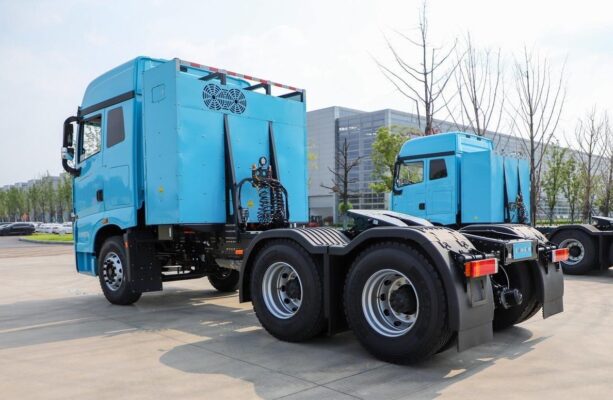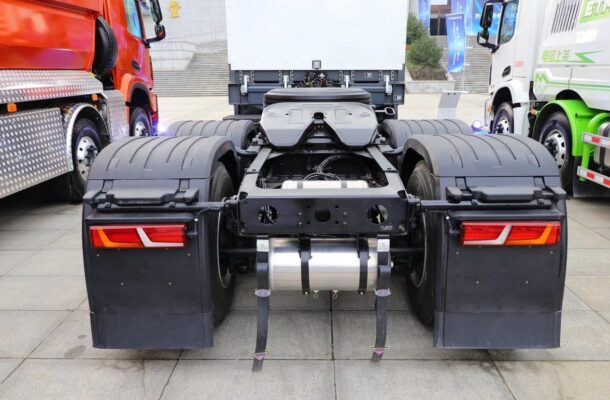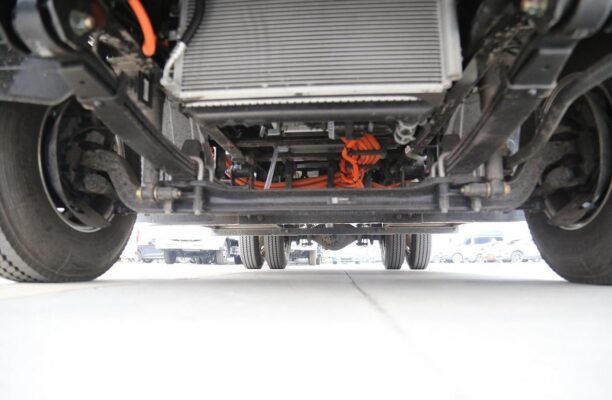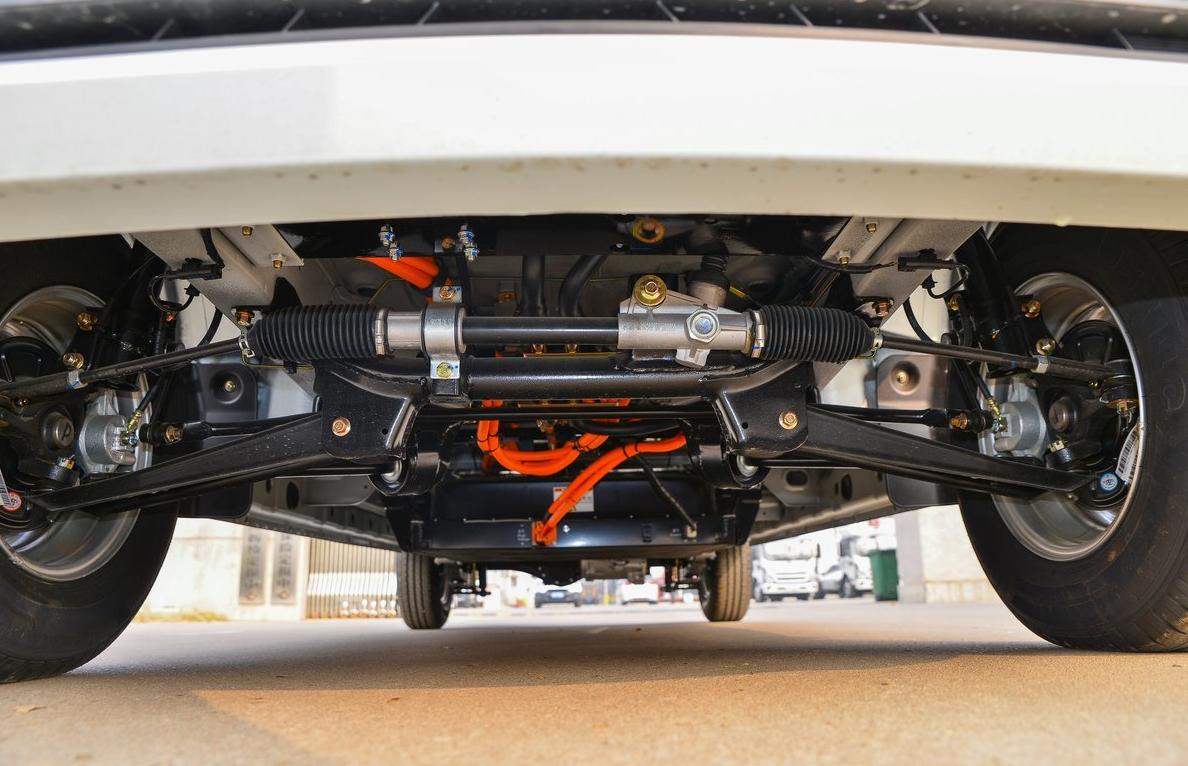Balita sa Electric Truck
Why Can Pure Electric Vehicles Save Fuel?
Nai -post sa ni Mga electric trucks
In the pursuit of more sustainable and efficient transportation options, pure electric vehicles have emerged as a promising solution. One of their most significant advantages is their ability to save fuel, which is a result of several key factors related to their energy supply method and power system design.

Question: What is the fuel – saving principle of pure electric vehicles?
The fuel – saving principle of pure electric vehicles is multi – faceted. At its core, pure electric vehicles use electrical energy to drive vehicles. This is a fundamental departure from traditional fuel – powered vehicles. In the case of electric vehicles, the conversion process from electrical energy to mechanical energy is relatively straightforward and efficient. Electrical energy can be precisely controlled and directed to the electric motor, which then converts it into the rotational force needed to move the vehicle.
Compared with fuel – powered vehicles, the conversion efficiency of electrical energy is significantly higher. In a traditional internal combustion engine, the conversion of fuel energy into mechanical energy is a complex and inefficient process. Fuel is burned in the engine cylinders, creating heat. This heat then causes the expansion of gases, which drives the pistons and ultimately turns the crankshaft. However, a large portion of the energy in the fuel is lost as heat during this process. In contrast, electric motors in pure electric vehicles can convert electrical energy into power more effectively, thereby reducing energy waste. Halimbawa, modern electric motors can have conversion efficiencies of up to 90% or more, while internal combustion engines typically have efficiencies in the range of 20 – 30%.

Question: How is the power system of pure electric vehicles different from that of fuel – powered vehicles?
The power system of pure electric vehicles and fuel – powered vehicles are fundamentally different in their composition and operation.
The power system of pure electric vehicles is mainly composed of batteries and electric motors. Batteries serve as the energy storage units, holding electrical energy until it is needed. They are designed to store a certain amount of charge, which can be used to power the vehicle over a specific range. Electric motors, on the other hand, are responsible for converting the electrical energy from the batteries into mechanical energy. They operate based on the principles of electromagnetism, where an electric current passing through a magnetic field creates a force that causes the motor to rotate.

In contrast, fuel – powered vehicles are composed of engines and transmission systems. The engine is the heart of the fuel – powered vehicle, where fuel combustion occurs. Fuel, such as gasoline or diesel, is injected into the engine cylinders and combined with air. A spark (in the case of gasoline engines) or high – pressure compression (in diesel engines) ignites the fuel – air mixture, creating a rapid expansion of gases. This expansion drives the pistons, which are connected to the crankshaft, ultimately converting the chemical energy of the fuel into mechanical energy. The transmission system then modifies this mechanical energy to adjust the vehicle’s speed and torque, depending on driving conditions.
This difference in power systems has a significant impact on the overall efficiency of the vehicles. Pure electric vehicles store electrical energy through batteries and then convert electrical energy into mechanical energy by electric motors to drive vehicles. The process is more direct and has fewer energy – loss steps compared to fuel – powered vehicles, where fuel combustion, heat transfer, and mechanical transmission all contribute to energy losses.

Question: What are the advantages of pure electric vehicles in terms of energy utilization compared with fuel – powered vehicles?
Compared with fuel – powered vehicles, pure electric vehicles possess several distinct advantages in terms of energy utilization.
The high conversion efficiency of electrical energy is a primary advantage. As mentioned earlier, electric motors can convert electrical energy into mechanical energy with high efficiency. This is because the electromagnetic processes in electric motors are relatively efficient, with minimal energy losses in the form of heat or other inefficiencies. In contrast, fuel – powered vehicles suffer from significant energy losses during the combustion process. When fuel burns, a large amount of energy is released as heat, which is not fully utilized for mechanical work.

Another advantage is that pure electric vehicles can charge by recovering braking energy during the braking process. This regenerative braking system is a unique feature of electric vehicles. When the driver applies the brakes, the electric motor can act as a generator, converting the kinetic energy of the vehicle back into electrical energy and storing it in the battery. This process not only helps in reducing the vehicle’s speed but also recovers a portion of the energy that would otherwise be wasted as heat in traditional braking systems. By reusing this energy, the overall energy efficiency of the electric vehicle is improved.
Pure electric vehicles also have no exhaust emissions in terms of energy consumption, which is closely related to their energy utilization efficiency. Since they do not burn fuel, there are no emissions of pollutants such as carbon monoxide, nitrogen oxides, or particulate matter. This not only benefits the environment but also indicates that all the energy used in the vehicle is directly contributing to its movement, without any energy being wasted in creating emissions.

Question: How does the energy utilization rate of pure electric vehicles compare with that of fuel – powered vehicles?
The energy utilization rate of pure electric vehicles is substantially higher than that of fuel – powered vehicles.
Sa pure electric vehicles, the conversion efficiency of electrical energy is a key factor contributing to their high energy utilization rate. As stated previously, electric motors can convert electrical energy into mechanical energy very effectively. This high – efficiency conversion is possible because the electric motor’s operation is based on precise control of electrical currents and magnetic fields, which allows for minimal energy losses.
In contrast, in the energy conversion process of fuel – powered vehicles, there are multiple sources of energy loss. The combustion of fuel itself is an inefficient process, with a significant amount of energy being lost as heat. Additionally, the mechanical transmission system in fuel – powered vehicles also incurs losses. Gears and other mechanical components in the transmission have frictional losses as they transfer power from the engine to the wheels. These combined losses result in a relatively low energy utilization rate for fuel – powered vehicles.
Under the same energy supply, pure electric vehicles can travel a longer distance. This is because more of the input energy is being used effectively to move the vehicle, rather than being lost in various inefficiencies as in fuel – powered vehicles. Halimbawa, if we consider a given amount of energy, whether it is in the form of electrical energy stored in an electric vehicle’s battery or fuel energy in a fuel – powered vehicle’s tank, the electric vehicle will be able to use a larger proportion of that energy to cover distance.

Question: What impact does the fuel – saving advantage of pure electric vehicles have on users?
The fuel – saving advantage of pure electric vehicles has a profound impact on users.
One of the most immediate benefits is the low operating cost. Since pure electric vehicles do not rely on expensive fuel, users can save significantly on fuel costs. Over time, this can amount to substantial savings, especially for those who use their vehicles frequently. Additionally, the maintenance and repair costs of pure electric vehicles are often lower. Electric vehicles have fewer moving parts compared to fuel – powered vehicles. Halimbawa, there is no need for complex engine components like pistons, valves, or a fuel injection system. This simplicity reduces the likelihood of mechanical failures and the associated repair costs.
Pure electric vehicles are also more environmentally friendly, which is an important consideration for many users. With no exhaust emissions, they contribute to cleaner air and help in reducing the overall environmental impact. This aspect is particularly appealing in urban areas, where air quality is a major concern. Meeting the needs of modern society for new energy, pure electric vehicles are in line with the global trend towards sustainable development.

The driving experience of pure electric vehicles is also enhanced. They are more stable and quiet during operation. The absence of engine noise and vibrations provides a more serene driving environment. This not only reduces the interference of noise and vibration on users but also adds to the overall comfort of the driving experience.
Sa konklusyon, the reason why pure electric vehicles can save fuel is mainly related to the differences in their energy supply methods and power systems. Through efficient electrical energy conversion and mechanical energy driving, pure electric vehicles have obvious advantages in terms of energy utilization and environmental protection, and also bring many benefits to users. As technology continues to progress, especially in the areas of battery technology and electric motor efficiency, the fuel – saving performance of pure electric vehicles will continue to improve. This will make them an increasingly important choice for future sustainable transportation, not only for environmental and cost – saving reasons but also for the overall driving experience they offer.
